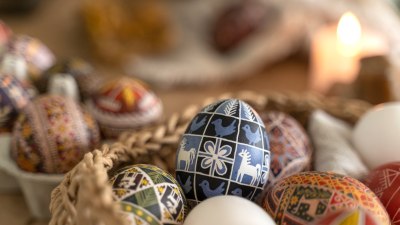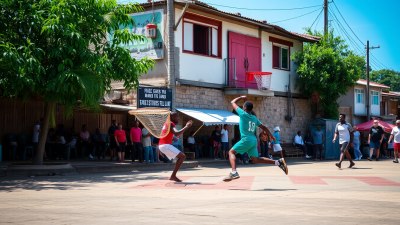Easter in Greece: Experiencing Orthodox Easter Traditions
Explore the rich and vibrant traditions of Orthodox Easter in Greece, from customs to celebratory meals.

Easter in Greece is a deeply spiritual and culturally rich celebration that reflects the nation’s Orthodox Christian heritage. Unlike the typical commercialism of Easter in many Western countries, Greek Orthodox Easter, or Pascha, is marked by unique rituals, deeply rooted traditions, and communal activities that bring families and communities together.
The observation of Lent, a period of fasting that lasts for 40 days, is fundamental to the Easter celebrations in Greece. Traditionally, this period intensifies the anticipation leading up to the joyous celebration of the resurrection of Christ, culminating in a series of events that capture the essence of Greek culture and religious fervor.
Holy Week: A Spiritual Journey
The week leading up to Easter Sunday is known as Holy Week and is a time for reflection, prayer, and preparation. Each day of Holy Week has its own significance and associated rituals. For instance, on Holy Monday, many churches hold services to commemorate the events leading up to Christ's crucifixion.
On Holy Thursday, the washing of the feet is performed, symbolizing humility and service, followed by the preparation of the Holy Communion. The day is also marked by the baking of special Easter bread known as 'tsoureki,' which is a sweet, braided bread flavored with mahleb and garnished with red-dyed eggs.
Good Friday: Mourning and Remembering
Good Friday is a solemn day of mourning for the Orthodox Christian community. In towns and villages across Greece, the Epitaphios (the epitaph or symbolic grave of Christ) is decorated elaborately with flowers. In many places, a procession takes place in the evening, where the Epitaphios is carried through the streets, accompanied by hymns and prayers. This poignant procession symbolizes the grief of the Virgin Mary and the mourning of Christ's death.
Holy Saturday: The Midnight Resurrection
After the sorrow of Good Friday, Holy Saturday is infused with a sense of anticipation and celebration. As night falls, believers gather in churches to participate in the midnight Resurrection service. At exactly midnight, the church bells ring, and the priest emerges from the altar proclaiming the good news of Christ’s resurrection, shouting, “Christos Anesti” (Christ is Risen). The congregation responds with “Alithos Anesti” (Truly He is Risen).
Following this proclamation, the faithful share their first meal together after a long period of fasting. This meal typically includes a traditional dish called 'magiritsa,' a soup made from lamb offal, greens, and lemon, and is enjoyed after the midnight service.
Easter Sunday: A Feast of Joy
Easter Sunday is a festive occasion characterized by feasting, music, and merriment. Families gather for a celebratory meal, and it is common for people to roast lamb on a spit, a practice known as 'oignon,' which signifies the joy of resurrection and the return of spring. This lamb is often served with a variety of side dishes, including 'avgolemono' (egg lemon soup), salads, and traditional Greek pastries.
In many regions of Greece, especially in the islands, Easter Sunday is marked by outdoor festivities. People often dress in traditional attire, and celebrations include dancing and singing in the streets. The atmosphere is one of joy, gratitude, and communal spirit, as people share in the blessings of resurrection.
Traditions and Customs Across Regions
While the overall framework for Easter celebrations remains consistent, various regions in Greece boast their unique traditions. For instance, in Corfu, the locals have a custom of throwing pots out of their windows on Holy Saturday, symbolizing the casting away of the old and welcoming of the new. This spectacular sight attracts thousands of visitors and is a vivid demonstration of Corfiot culture.
In Crete, the Easter celebration often includes traditional folk dances and music, with the Cretans showcasing their rich cultural heritage. The island’s picturesque landscapes provide a fitting backdrop for the vibrant displays of joy that characterize Easter festivities there.
Significance of Red-Dyed Eggs
A prominent symbol of Greek Easter is the red-dyed egg, which represents the blood of Christ and his resurrection. These eggs are often used in a traditional game called 'tsougrisma,' where participants tap their eggs against each other to see whose egg remains uncracked. This playful competition adds an element of fun to Easter festivities and is enjoyed by both children and adults alike.
The Role of Community
Community plays a pivotal role in Greek Orthodox Easter celebrations. It is a time when families gather, friends reconnect, and communities come together to celebrate their shared beliefs and cultural heritage. The collective participation in church services, processions, and festive meals strengthens bonds and fosters a sense of belonging and unity among the people.
The Spiritual Essence of Easter
Beyond the surface-level celebrations, Greek Orthodox Easter carries deep spiritual significance. It serves as a reminder of hope and renewal, offering a sense of purpose and connection to the divine. The rituals and traditions observed during this time are not merely cultural practices but are imbued with profound meaning, reflecting the core values of love, sacrifice, and resurrection.
Conclusion: A Journey into Tradition
Experiencing Orthodox Easter in Greece is an unforgettable journey into the heart of Greek culture and spirituality. The blend of ancient traditions with contemporary celebrations creates a rich tapestry of experiences that enlivens the spirit. For anyone looking to immerse themselves in a vibrant culture, participating in Greek Orthodox Easter traditions is a unique opportunity to witness the beauty of faith, family, and community.











